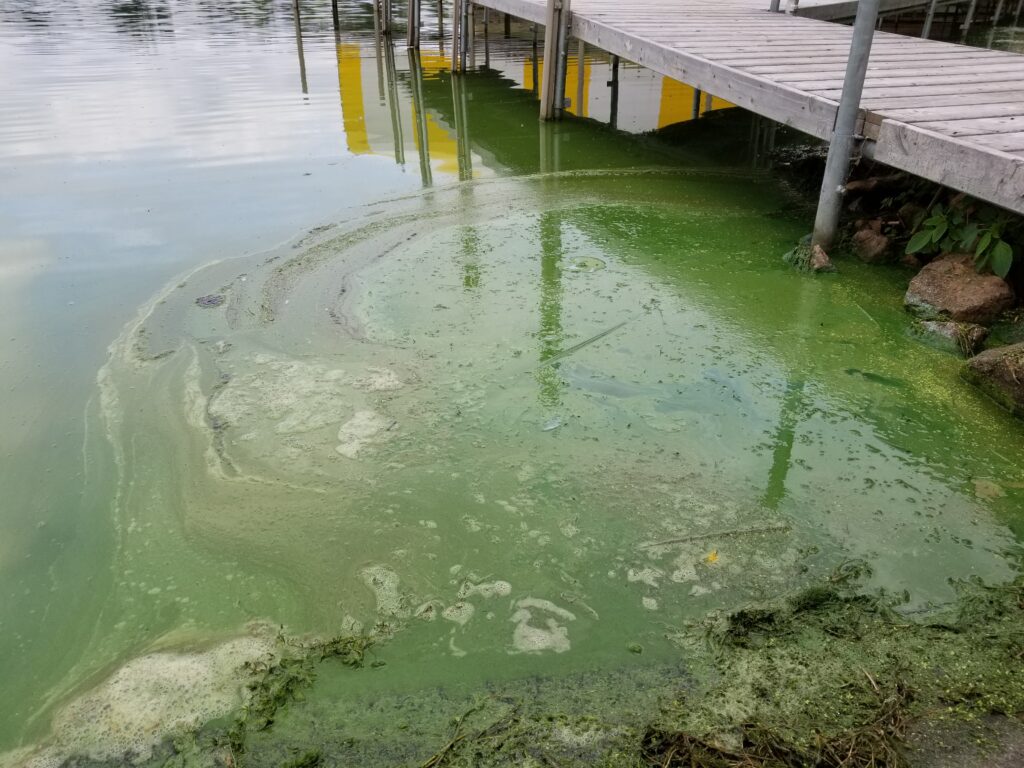Blue-green algae are not algae at all, but rather types of bacteria called cyanobacteria. Cyanobacteria thrives when there is a combination of two factors: warm weather and nutrient-dense water. Some variations of cyanobacteria produce toxins and cause cause severe illness in humans and pets.
How can you spot blue-green algae?
Water that contains toxic algae blooms will take on the appearance of pea-green paint or may slime on the surface. If certain wind conditions are present, the film will concentrate on shoreline areas where animals may drink or swim.
Can you prevent harmful blooms?
We cannot control the weather, but we can reduce the amount of nutrients introduced into the water through run-off. Learn more about Lake-Friendly Landscaping
When in Doubt, Stay Out
Because you cannot tell by looking at blue-green algae whether it is toxic or not, it is best to avoid swimming or otherwise recreating in areas with algal blooms. If you or your pet are exposed to an algal bloom, be sure sure to rinse off with fresh water immediately.
For more information about possible health effects and the risk levels of different recreational activities, visit the MN Pollution Control Agency website. Additional resources may be found at the MN Department of Health website.
Other Common Types of Algae
- Bryozoans – View MN DNR webpage
- Algal Blooms, Scums, and Mats in Ponds including Filamentous- View University of Arkansas
